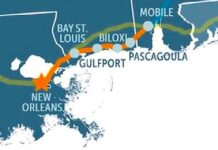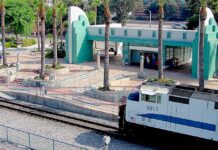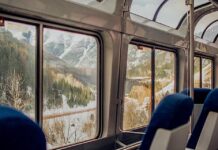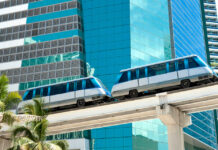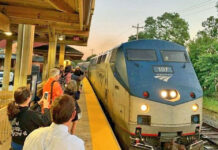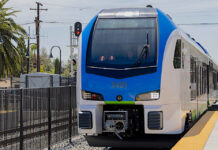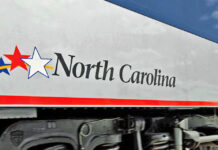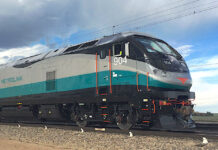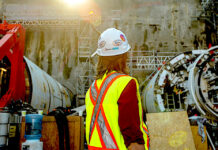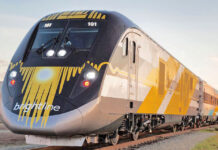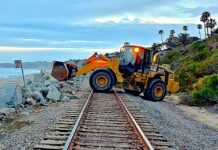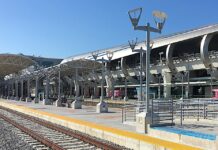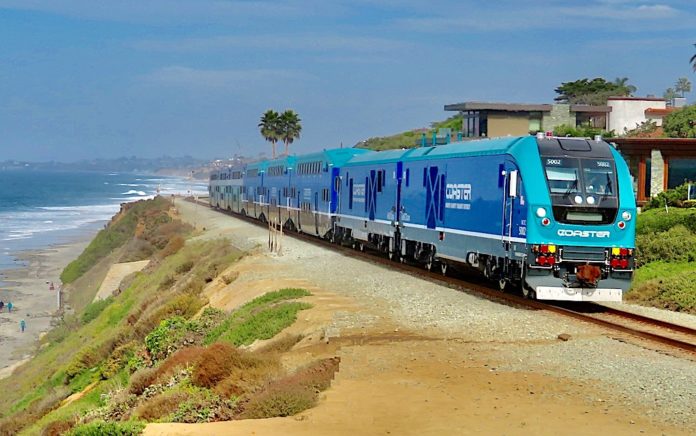
SoCal’s cliff-top trains could use tunnels to avoid rising seas
Beachfront bluffs in San Diego County are crumbling as waves from the rising ocean chew away at the base of cliffs. A regional planning group called the San Diego Association of Governments (SANDAG) is pushing to move the tracks to safer ground within a decade. That’s far faster than an earlier plan to do it by 2050. Flooding on the tracks has forced local authorities to stop or slow trains repeatedly. SANDAG plans to install new sea walls to keep train passengers safe over the short term. But rising seas will eventually will make moving the tracks inevitable. [eenews.net]
Olympic bullet train showcases China’s railway prowess
Thanks to tight restrictions aimed at stopping the spread of COVID-19, foreign athletes, media staffers and officials at the Beijing Winter Olympics will only glimpse everyday life in China from inside the so-called closed loop management system separating them from local residents. While the Olympic exclusion zone is essentially limited to sports venues, press centers and accommodation, it also affords some visitors a close-up look at one of the most visible symbols of China’s growing economic power — the country’s high-speed railway network. [mainichi.jp]
Battery-powered electric trains are picking up speed
Battery electric power is commonplace in cars and trucks and is being tested in planes, helicopters, and container ships. Now, battery power is coming to trains, in place of the diesel-fueled generators that have powered locomotives for more than a century. Switching to battery electric power will reduce greenhouse gas emissions and improve local air quality. Diesel locomotives spew particulate matter and other toxic pollutants, accounting for an estimated 1,000 premature deaths and $6.5 billion in health costs a year in the US. [wired.com]
Fare caps might get transit out of the pandemic slump
For years “pay as you go,” which gives riders the freedom to choose when and how often they travel without being locked into a contract, has been seen by cities as the fairest ticket for public transit payment. But a growing number of urban transit authorities are backing a tool that experts say has the potential to both increase ridership amid a pandemic-induced slump and reduce the financial burden on the poorest commuters: fare caps. [nextcity.org]
Covid-era US public transit use down; car crashes rising
The Covid-19 pandemic has seen two pernicious trends emerge as to how Americans are getting around their country: public transit is struggling with a reduced number of paying customers, while there has been a sharp increase in car crash deaths. Transport experts say that these trends, while complex and not necessarily linked, are slowing progress on road safety while also hampering efforts to improve the livability of cities and to reduce air pollution and greenhouse gas emissions from the US transportation system, which is the country’s largest contributor to dangerous climate change. [theguardian.com]
Dozens of U.S. cities to get new public transit in 2022
For public transit, 2022 could be a huge year. Across the U.S. and around the world, dozens of new train, bus, and streetcar lines are scheduled to begin operations, according to an overview of transit projects compiled by urban researcher Yonah Freemark. After two years of the pandemic slashing ridership, the planned openings of these years-in-the-making transit lines represent a glimmer of hope that public transit is, if not well, at least alive. The surge of openings includes 22 fixed guideway lines, subways and streetcars as well as dozens of major limited-stop express bus lines. [fastcompany.com]

